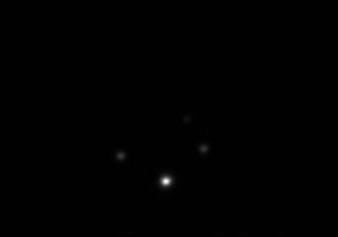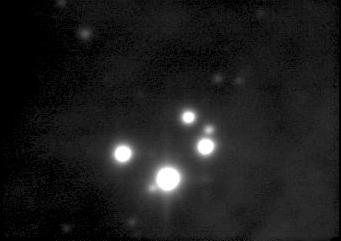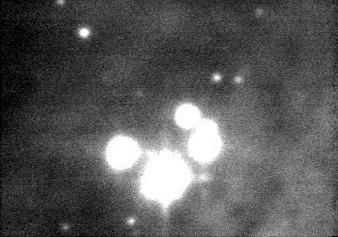

Images of the Trapezium were taken to show the wide dynamic range possible in CCD cameras, especially when used at very large focal lengths. The full aperture was used. Where appropriate, the images were scaled up in brightness to show the very dim companions. Short exposures were always taken, to prevent saturating the brighter component.



On a night when the seeing was too poor for imaging Jupiter or Saturn, (January 2, 2000), I recalled that the Trapezium covers about the same area on the CCD as Jupiter. Since I was set up for imaging at F/59 (effective focal length of 14.2 m) with my 9.5" aperture Newtonian telescope, I decided to see how well I could image the Trapezium in Orion. (It was also the subject of an interesting double star article in the February 2000 issue of Sky and Telescope magazine.) Since I didn't want to overexpose the brightest star, the longest exposure was 10 seconds long through the clear filter in the SBIG ST-7/CFW-8 CCD camera. The images above are 8 images combined to reduce noise, then stretched to show the stars or nebulosity. The first image shows the full image range, so only the four brightest stars can be seen. Stretching the intensity according to the square root function allows the dimmest stars to be shown. Components E and F (see the drawing in the same issue of Sky and Telescope, on page 94 (fold-out) for identification) are clearly resolved from the brighter four stars. A hint of nebulosity can be seen, so the original image was stretched linearly about the lowest levels, shown in the final image. The brighter stars are completely washed out, but the nebulosity shows up well, with resolution in the arcsecond range.
Return to the Image Gallery index page
Return to Stellar Products home page